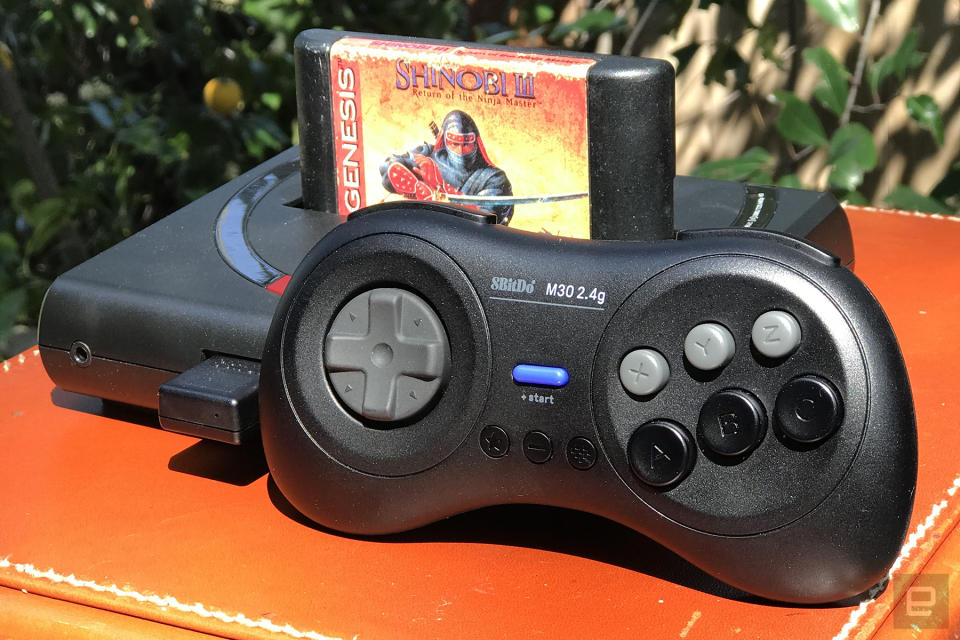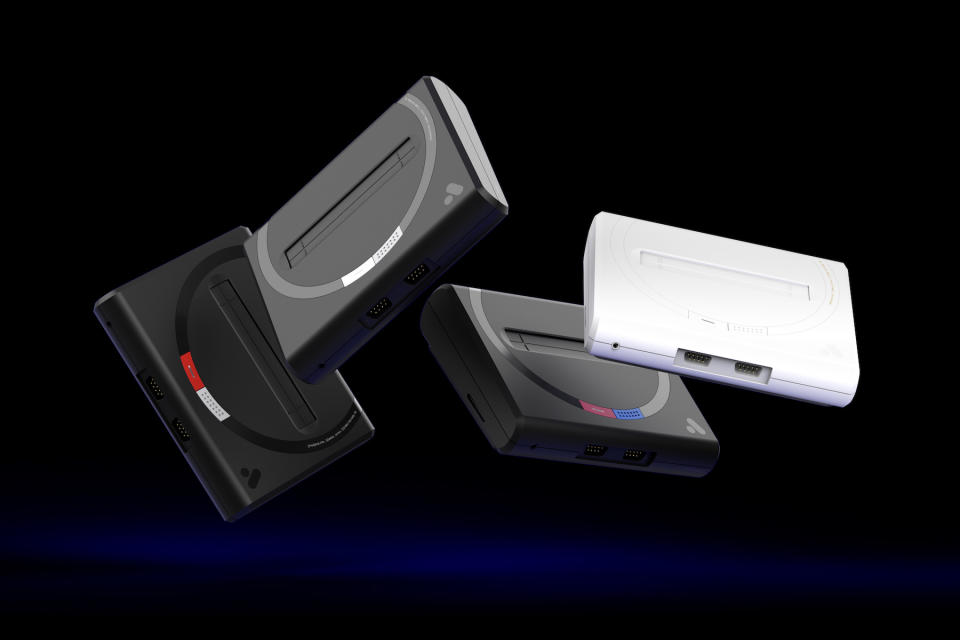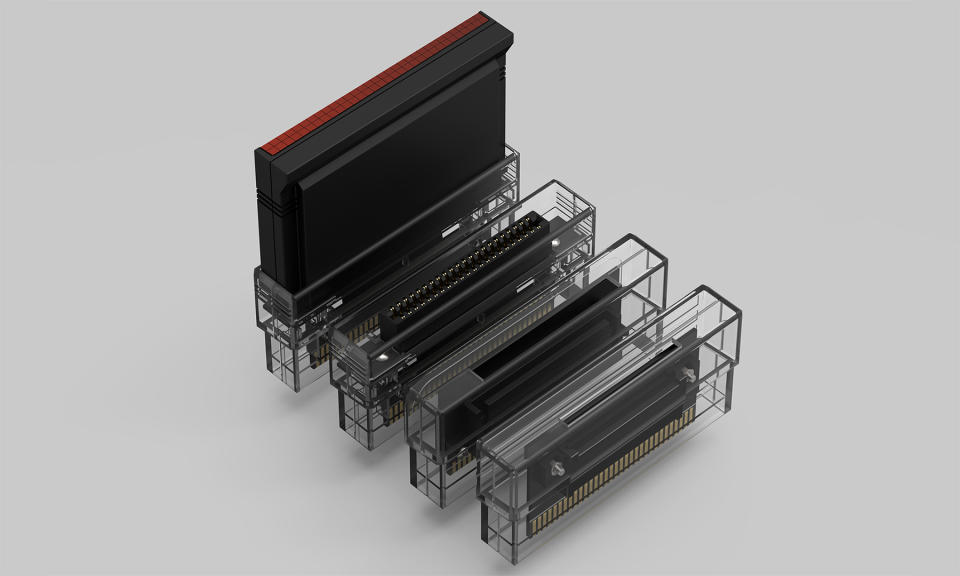The Analogue Mega SG wins the retro gaming console war
Perhaps the best, and most cost-effective, premium retro console ever made.
There's never been a better time to be a retro video game enthusiast. Playing old video games on modern screens used to require elaborate cabling and detailed electronics knowledge, or you would have to wade into dodgy ROM sites and tinker with confusing emulators. Today, however, we are blessed with a panoply of options, led by Nintendo's "classic" mini-consoles. But the premium, top-of-the-line retro console maker remains the hipsterish British-American company, Analogue.
Analogue's Super NT, a Super Nintendo (SNES) hardware emulator released last year, was a revitalization of the SNES library ready to plug and play (and upscale) to modern HD televisions with a graphical fidelity unmatched by even Nintendo's own offerings. But the Super NT was just the tip of the retro spear, because, as any '90s kid will tell you, some console wars never die. And sure enough, Analogue has just released their take on the other dominant console of the 16-bit era: the Sega Genesis. Analogue's Mega SG is a beautiful little piece of hardware that does for the Genesis/Sega CD/Master System library what the Super NT did for the Super Nintendo -- and is the better value proposition of the two.
The Mega SG is a small, sleek console about the size of a stack of CDs, almost exactly the same size as the Super NT. The build quality is similarly premium: it consists of a matte-finished plastic frame and a rubber footpad, with a subtle design that takes cues from the original Sega hardware, seen in the color scheme of the power and reset buttons. But like the Super NT, it's really all about the Mega SG's guts.
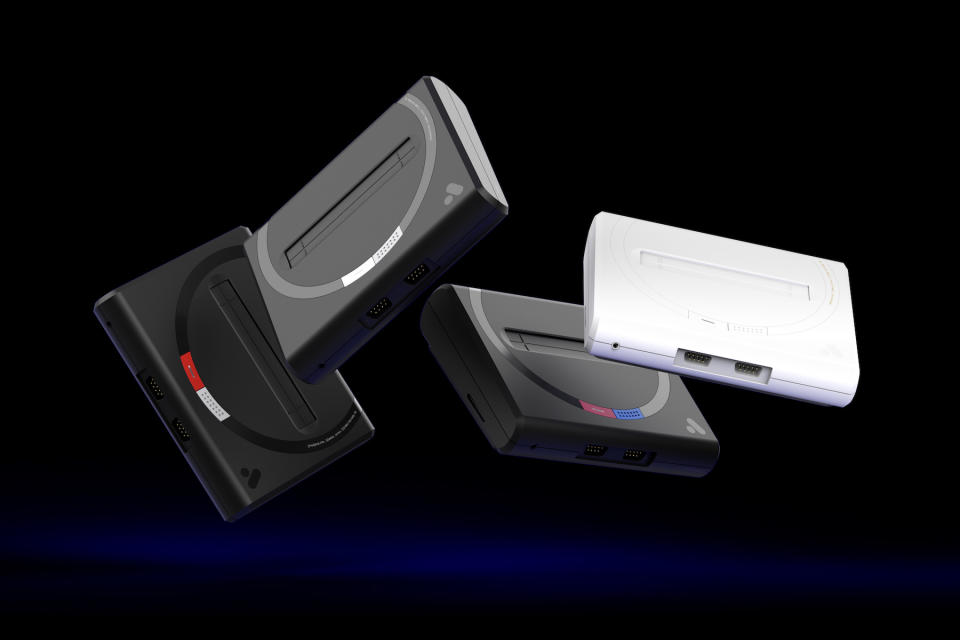
The device uses FPGA technology (that's field programmable gate arrays, in case you were wondering) to reproduce the original console on the hardware level. This means that, unlike with a software emulator, you are not running software that pretends to be the original console and has to be modified to work on a game-by-game basis. With FPGA, Analogue has recreated the Genesis experience from the hardware level up. For all intents and purposes, this is as good as the original hardware itself. It has played every one of the two dozen plus carts I've thrown at it as flawlessly as possible, with absolutely none of the lag that emulators are famous for.
And herein lies the real selling point for the Mega SG: it does all this on a modern flat-panel TV (even 4K TVs) right out of the box, with zero messing around.
Anyone who has spent time tinkering with retro games knows that you can quickly get lost down a wormhole of cables and compatibility. Check out all of the options and features on the best Genesis emulator out there for a PC (Gens maybe, or Kegan Fusion) -- a lot of these settings aren't just for fun, optional tweaking -- you need to program them for each game you're trying to play.
At the other end of the spectrum, if you want to hook up an original console to a modern TV, you're going to need an expensive upscaler and custom-built cables, which easily will eclipse the price of the already high price of the Mega SG ($190). The other option is some kind of Raspberry Pi setup, but again, this will require emulator tweaking on a game-by-game basis. The Mega SG eliminates all of this complexity right out of the box -- you just plug it into your HDMI port and it is ready to play on your flat-panel, automatically upscaled and set to mimic the 4:3 proportions of old-school CRT TV sets.
Now, that's not to say that Analogue doesn't give you options to tinker with. Indeed, it is a tinkerer's dream. Like with the Super NT, you can customize video output and smooth pixels. You can enable scan lines in a variety of ways. Analogue advises "using hybrid scan lines at default depth with vertical interpolation enabled and make sure the vertical resolution is at an integer scaling (4x or 5x, not 4.5x which is default)." If that's the kind of sentence that gets you stoked, then yes, this is the console for you.
Of special note is the audio quality on display here. The Sega Genesis was derided for having shitty audio due to some models using low-quality mass market components. But here, Analogue's audio quality surpasses even what the best the Genesis was capable of, outputting audio on the full frequency range (you can also limit the frequency range to match the original hardware). There's even a 3.5mm audio jack on the front of the console, like the Genesis had, if you want to plug in high-end headphones and sink into full-on chiptune nirvana.
The Mega SG has ports for old Genesis controllers which will also support anything that fits into that hole, including all bluetooth-enabled Genesis controllers on the market. But note that the console does not ship with a controller, so plan to be out at least another $10-25 for controller expenses. As they did for the Super NT, Analogue has once again teamed up with controller maker 8BitDo, this time to market their wireless Genesis controller, the m30 2.4g -- it's $25 and I highly recommend it.
If you've come this far in the review, you're probably wondering if the Mega SG supports the range of Sega peripherals and hardware add-ons that gave rise to the "tower of power" meme. The answer is yes and no.
Yes, the Mega SG works flawlessly with all models of Sega CD, so you're into '90s full motion video capture cheese, you're golden here (though it does look a little physically inelegant when connected). But no, the Mega SG does not work with the Sega 32X. And yes, there's a cartridge adapter for Master System games included, and yes, there are more adapters promised to come soon, including a Game Gear adapter. And yes, absolutely of course you can snap Sonic 3 into Sonic and Knuckles -- "lock on" technology achieved and preserved.
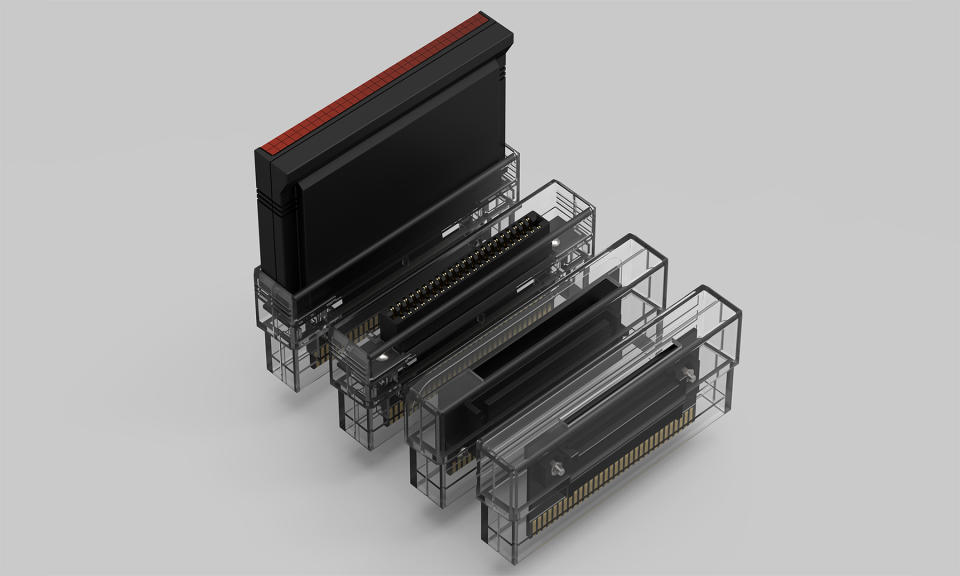
The Mega SG is $189.99 without a controller. This is without a doubt a high price to indulge a retro gaming hobby, but I believe there's more of a value proposition here than there is with the similarly priced Super NT console.
Unlike Super Nintendo games, Sega Genesis carts are very cheap right now. I spent $60 at a neighborhood retro store and walked away with 10 carts, including classics like Sonic 2 and 3, Ecco the Dolphin, Altered Beast, Shinobi 3, and Streets of Rage. Carts are plentiful by the batch on eBay, OfferUp and local Goodwills. Sure, there are rare collector's items that run up expensive prices, but even some of the best games to ever grace the Genesis are cheap -- Gunstar Heroes is $50 on eBay and ToeJam & Earl can be acquired for $20. Also, the Super NT was "jailbroken" shortly after release, enabling you to boot ROMS from an SD card. We can probably expect the same treatment for the Mega SG too, which means Sega's deep library will soon become very accessible. Suddenly, $189.99 is not as expensive as it seems at first blush.
Unlike Super Nintendo games, Sega Genesis carts are very cheap right now.
The Mega SG does come with one final surprise -- a built-in, unreleased Genesis game from Battlefield developer DICE. Once thought lost forever, "Hardcore" (or "Ultracore" as it's known here for licensing issues) is a Euro-style run-and-gun shooter that a small team of dedicated developers salvaged from a single dead hard-drive and have saved from obscurity. The game, a sci-fi themed shooter fest, oozes '90s aesthetics -- though it feels somewhat half-baked. The devs claim the game is 99% complete, but it feels a little anemic on the conceptual stage. There's almost no framework or context for why you're killing tons of robots, but the shooting is decent twitchy action. Regardless, it's a fascinating piece of retro history that comes built into the Mega SG. It's no Super Turrican Director's Cut, which came installed on the Super NT -- but it's a great thing to have.
At the end of the day, the question remains -- who is the Mega SG for? Yes, it is for nostalgic Sega enthusiasts, and yes, it is for retro gaming historians, though some of them would no doubt prefer to run original hardware on old CRT televisions (like the Super NT, the Mega SG does not output to old televisions -- only to HDMI-ready sets).
But I would argue that, even more so than the Super NT, the Mega SG is more accessible to those who have been intrigued by retro games but don't know where to start. The Mega SG might just be the ultimate "retro" gaming console on the market right now for one key reason: Sega games are cheap, abundant and easy to acquire. With Super NT, you're bound to the Super Nintendo cart marketplace, which is in a bit of a price bubble. But the Sega library is deep, plentiful, and affordable. As the console wars stand today, perhaps because of its failures, Sega once again does what Nintendon't.

